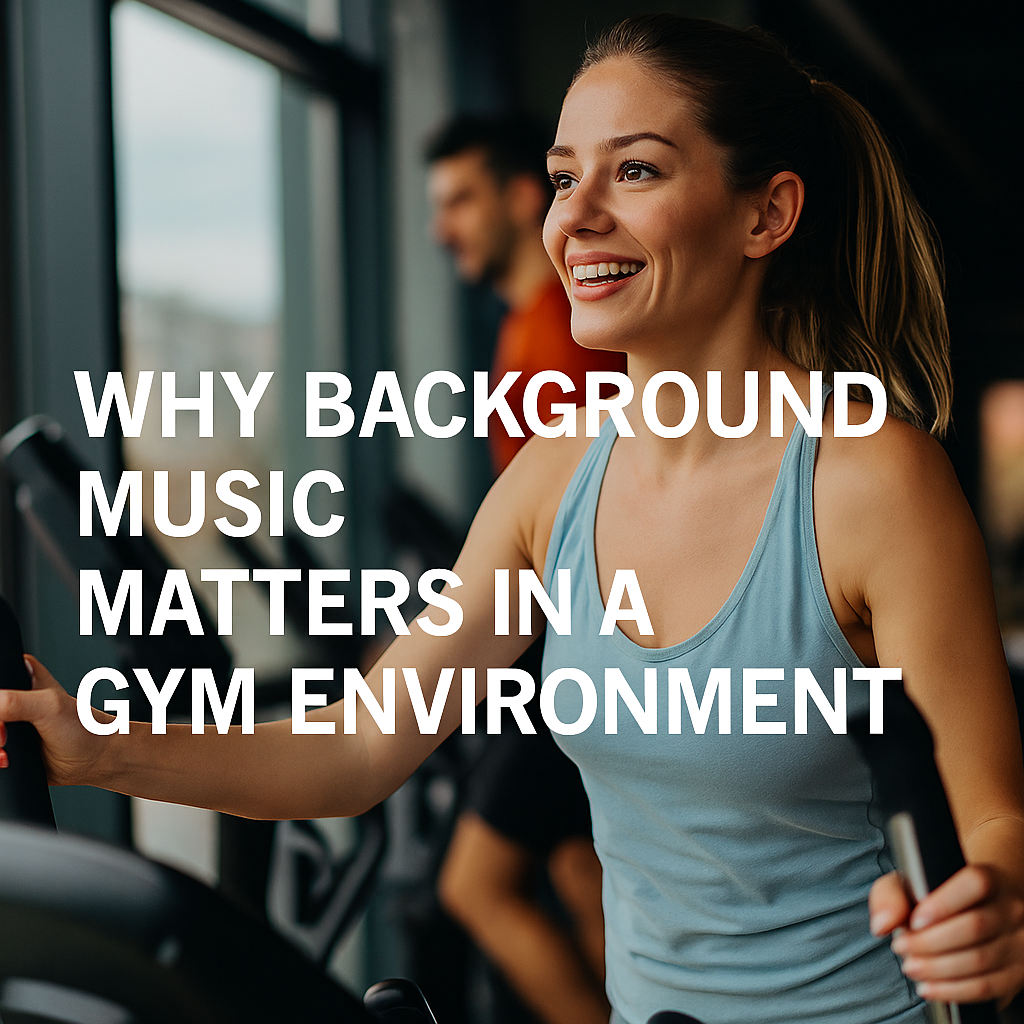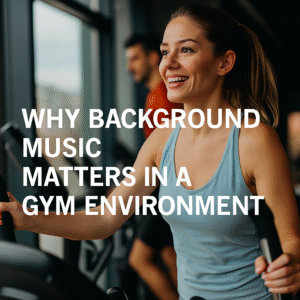Step into any successful gym today and you’ll likely hear something beyond the clanging of weights and rhythmic breath of cardio junkies. You’ll hear music. And not just any music, but a carefully curated soundtrack built to motivate, uplift, and push members to power through every squat, sprint, and spin. Background music in gyms is no longer a ‘nice to have’; it’s a vital part of the fitness ecosystem. It’s what energizes early risers and keeps evening regulars coming back for more.
Let’s explore why background music is essential to the gym experience, how it shapes customer behavior, improves performance, and helps gym owners build a loyal, engaged client base.
Music Motivates Gym-Goers to Push Harder
A well-crafted playlist can be the difference between showing up and skipping a workout. Music triggers emotional responses in the brain, helping gym members feel more pumped, focused, and less self-conscious. Studies have consistently shown that individuals are more likely to complete workouts and attend sessions regularly when music is playing in the background. In fact, many gym-goers admit that without music, they wouldn’t feel the same drive to push through their routines.
Music Gets You ‘In the Zone’
For new members or those lacking confidence, the gym can feel like an intimidating place. Music helps mask external distractions and internal insecurities. A powerful soundtrack enables members to disconnect from their surroundings and get ‘in the zone,’ helping them focus on their workouts rather than comparing themselves to others.
Music Improves Athletic Performance
Scientific research shows that music can significantly enhance both aerobic and anaerobic performance. It influences speed, endurance, strength, and repetition. A playlist with tracks in the 120-140 BPM range aligns with most natural workout rhythms, helping gym members move more efficiently. In resistance training, music has been shown to reduce perceived exertion, essentially making a hard workout feel easier and more enjoyable.
Highs and Lows: Music for Energy and Recovery
Music isn’t just about high-octane beats. The right gym playlist ebbs and flows with the workout routine. Fast-paced, high-energy tracks can kickstart an intense HIIT session, while slow-tempo songs help cool down post-exercise. Curating playlists that match the emotional and physical pace of workouts—like spin, Zumba, or circuit training—enhances effectiveness and minimizes burnout.
A Natural Painkiller and Mood Booster
Listening to music during exercise has been proven to reduce the perception of pain and fatigue. This is partly due to the release of ‘feel-good’ hormones such as endorphins and dopamine. These neurochemicals increase pain tolerance and reduce cortisol levels (the stress hormone), leading to a more positive workout experience.
Happy clients return more frequently and are less likely to cancel memberships. Music doesn’t just improve mood—it boosts member retention and, ultimately, profitability.
Better Coordination, Fewer Injuries
Background music stimulates the motor cortex of the brain, which controls movement. This heightened neural activity improves timing and coordination, making it easier for individuals to maintain proper form during exercises. The result? Fewer missteps, less strain on joints, and fewer injuries. Better performance with reduced risk keeps members healthy, motivated, and coming back.
No Wires, No Worries
Many gym members use personal headphones, but these can be a safety risk. Cords get tangled, earbuds fall out, and adjusting music eats into workout time. By offering quality background music throughout the facility, gyms eliminate the need for personal devices, improving workout flow and keeping members more engaged with their surroundings.
Why the Radio Doesn’t Cut It
While some gyms try to save effort by playing the radio, it’s not the best solution. Commercial breaks, random track selection, and inconsistent genres can create a disjointed experience that interrupts workout focus. Radio DJs and advertising aren’t curated for your brand or your members’ intensity levels. Having control over your soundtrack ensures that the music consistently complements your gym’s identity and workout schedules.
Music as a Branding Tool
Just as lighting, color schemes, and interior design shape your gym’s identity, so too does your music. Curating a distinctive soundscape helps build brand loyalty and creates a memorable customer experience. Whether you run a boutique wellness center or a hardcore powerlifting facility, music reinforces your brand tone, energizing the space in line with your values.
Tailor Your Music to Fit Every Audience
Music preferences vary throughout the day and so should your playlists. Early morning crowds may prefer softer, energetic tracks, while evening rushes might demand high-BPM motivation. Smart systems powered by AI can help automate this process by using location, time of day, and crowd analytics to generate adaptive music environments that meet your members where they are.
Legal Music Licensing for Gyms
Public spaces like gyms must use licensed music to avoid legal repercussions. Playing Spotify or YouTube playlists is not legally permitted in commercial settings. Instead, invest in commercial background music providers or direct licensing solutions that offer royalty-free or Licensed music, ensuring you’re compliant with copyright regulations.
Conclusion: Music is Fuel for the Fitness Mindset
Music in gyms isn’t an afterthought, it’s a powerful tool that enhances performance, improves mood, and builds community. The right background music keeps clients focused, relaxed, and emotionally connected to their workout experience. For gym owners, it means better member retention, stronger brand identity, and ultimately, increased revenue.
With streaming tech, AI playlisting, and licensed music services more accessible than ever, now’s the time to refine your gym’s soundtrack and create an environment that truly moves people.





